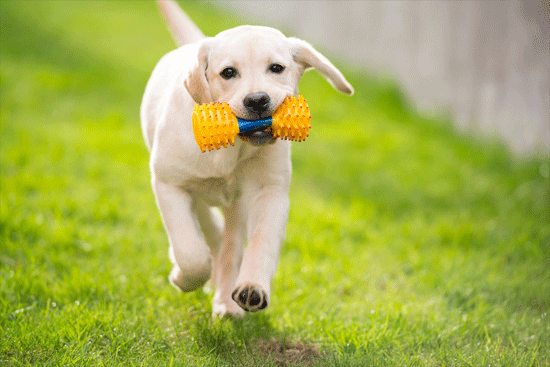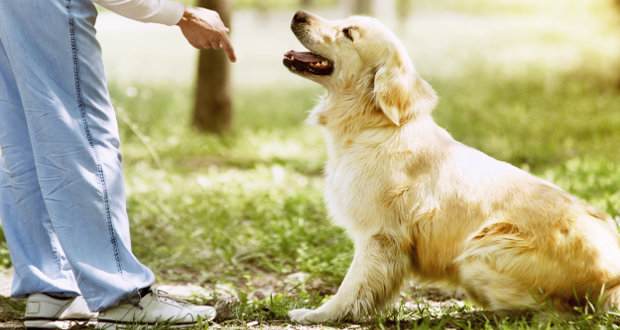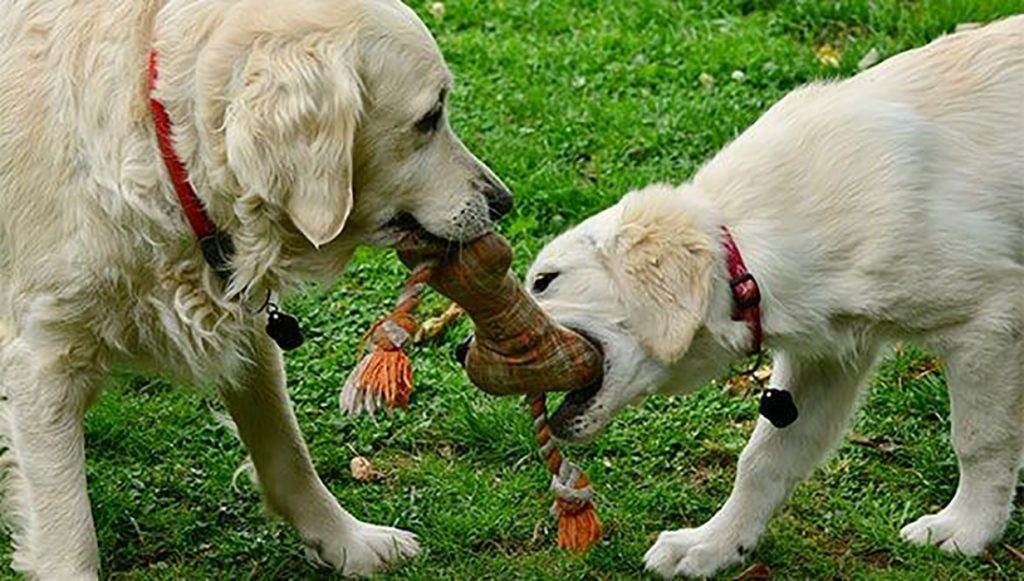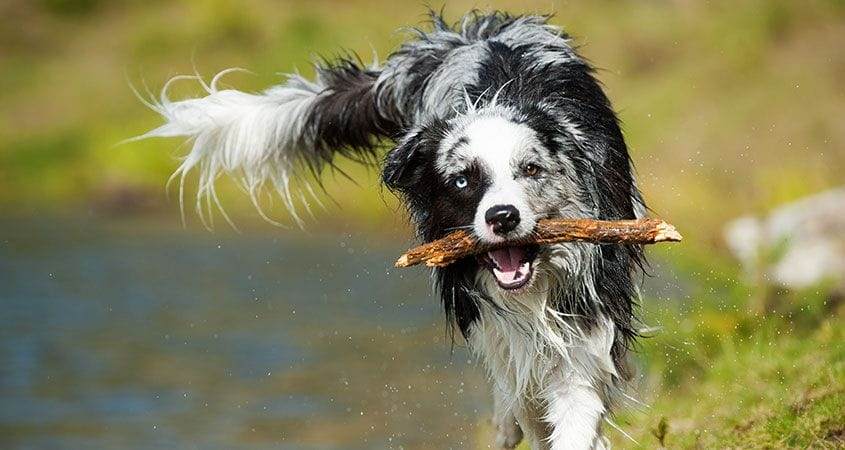Even though Labrador Retrievers are among the most well-known and favored dog breeds worldwide, very few people have heard or known Silver Labradors. No wonder there’s a huge controversy is going on surrounding these dogs. With their immense love for the breed, Labrador Retriever fans are bound to become hostile if someone tries to introduce “unnatural” changes in their favorite dog breed and therefore downgrading its standard.
Then, there are some fascinating arguments of Silver Lab’s fans as well. However, this article is not about the controversy between designer-generation and purists over Silver Lab’s legitimacy as a Labrador Retriever. Here we will merely address the issue of your Silver Labrador’s participation in AKC Hunt Tests.
Truth be told, it is not a concern at all. The AKC Hunt Tests allow Silver Labradors to run. However, you have to ascertain that your pooch is enrolled with the AKC. But then, there are controversies over whether Silver Labradors should be permitted to run or not. Consequently, you may have to withstand the backlashes of both contending handlers and the spectators in the crowd. Let us discuss this in more detail.
About Silver Labrador’s Labrador Status
As far as genetics and dog breeding are concerned, there is no question of doubting that Silver Labs are Labrador Retrievers. However, for Silver Lab supporters, this statement is not the end of a controversy. Instead, it is just the beginning.
Unfortunately, the American Kennel Club recognizes only three colors when it comes to Labradors. These are chocolate, yellow and black. There is no mention of Silver Labradors. However, they do not explicitly reject the dilute colored Labradors as well.
All you need to do is know your pup’s pedigree and enroll it under one of the standard colored categories, of which it is a diluted version. And this is precisely what annoys Silver Lab supporters. It is like deliberately remaining silent on a significant issue. However, the AKC doesn’t understand that their zipping-up on such weighty issues can cost a dog its registration.
In fact, their silence is the very reason purist breeders resent Silver Labs so much. According to the American Kennel Club guidelines regarding Labrador Retrievers, dogs with the following deviations are subject to disqualification.
- Docked or cropped tail.
- Pink or colorless nose.
- Lack of pigment on eye rims.
Regarding the Labrador Retriever’s color, AKC treats the following features as genetic errors or disorders.
- Colors or color combinations other than black, chocolate, and yellow.
- Black with tawny markings.
- Black with yellowish-brown markings.
- Chocolate with tawny markings
- Chocolate with yellow-brown markings.
For some opponents of Silver Labs, the deviation in coat color caused by the diluted genes is equivalent to the disqualifying features mentioned above, and therefore, the AKC must put a full stop on their registration. In fact, organizations like Labrador Retriever Club Inc. solemnly declare that it doesn’t identify or accept or permit the advertising or sale of any dog called “Silver Labrador.”
Other opponents of Silver Labradors repudiate its purebred status. According to them, at some point in time, most probably during the 1940s and 50s, the Labradors must have been crossbred with some other dog. As far as the online platform is regarded, most of the speculations point towards the Weimaraners.
Even though there is a striking similarity between the Weimaraner’s and Silver Lab’s coat color, there is no scientific evidence to prove this theory.
Moreover, it hardly matters if you are a Silver Labrador supporter or not. The reality is that the American Kennel Club enrolls Labrador Retrievers of dilute colors. And once such Labradors are registered, no one can stop them from running in the AKC Hunt Tests.
Why are Silver Labradors allowed to run by the AKC?
According to the American Kennel Club regulations, a dog can participate in the Hunt Tests if it meets the following criteria:
- Must be at least six months old or more on the event day.
- Must be enrolled with the AKC or its affiliated domestic and foreign organizations.
Furthermore, the regulations state that all eligible breeds must be permitted to run in the Hunt Tests. Therefore, no one can forbid your Silver Labrador from running in the Hunt Tests as long as AKC continues to enroll Labrador Retrievers with diluted coat color.
Besides the Labrador Retrievers, the Hunt Tests permit the following dog breeds to participate:
- Barbet
- American Water Spaniels
- Chesapeake Bay Retrievers
- Boykin Spaniels
- Drentsche Patrijshond (Drent)
- Curly-Coated Retrievers
- German Shorthaired Pointer
- Flat-Coated Retrievers
- Golden Retrievers
- German Wirehaired Pointer
- Labrador Retrievers
- Irish Water Spaniels
- Nova Scotia Duck Tolling Retrievers
- Miniature Poodles
- Small Munsterlander
- Standard Poodles
- Spinone Italiano
- Weimaraner
- Wirehaired Pointing Griffon
- Vizla
What Labrador colors does the American Kennel Club accept?
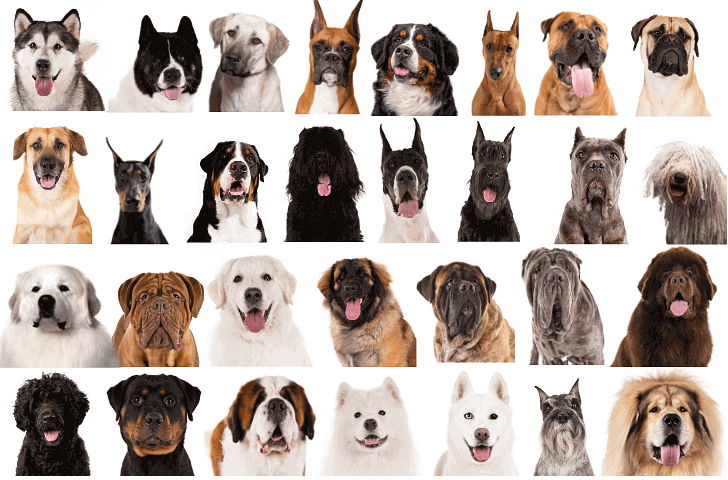
According to the American Kennel Club guidelines, there are mainly three colors when it comes to Labrador Retrievers. They are chocolate, yellow and black. Interestingly, when we search for Labradors in classifieds or reputed websites like Craigslist, we also find Labs of other colors. These colors include charcoal, silver, champagne, white, and fox-red.
One may ask why breeders are allowed to breed these Labradors in the first place if they are not identified by the AKC?
As far as white and fox-red colored Labradors are concerned, they are not genetically distinct from yellow-colored Labradors. On the contrary, they are just one of the shades of yellow Labradors. Even the AKC website recognizes these shades while describing the yellow-colored Labradors.
According to the website, yellow-colored Labradors have three shades– almost white, butterscotch, and fox red. Thus, a Labrador Retriever having any of the color variants mentioned earlier meets the AKC prescribed Labrador breed standard.
The same is the case for chocolate-colored Labradors. They can vary from dark to light chocolate and will still be considered Labradors.
However, when it comes to charcoal, silver, and champagne-colored Labradors, there is no mention of them on the AKC website. And because these colors are caused by the diluted genes, the Labrador colors mentioned earlier are considered designer dogs.
Therefore, purist breeders argue that the American Kennel Club must not enroll these designer colored Labradors under the purebred categories. It can downgrade their breed standard. Obviously, they give such arguments due to their immense love for the popular breed.
However, they have no scientific evidence to establish the fact that Silver Labradors are not purebred dogs. All they have is circumstantial evidence. Yet reputed organizations like the National Labrador Retriever Council in Australia claim to be sure that the Silver Labradors are a product of interbreeding between the Labrador Retrievers and Weimaraners. Therefore, they must not be enrolled under the purebred category.
Well, who can blame these organizations when even the AKC is not ready to overtly confront this issue? It is appalling to see that the AKC is not prepared to recognize Silver Labradors, yet they enroll these dogs under one of the accepted colors. Isn’t it a form of deception?
Unfortunately, as long as the speculations around the source of diluted genes in Labrador Retrievers are put to rest by the scientists, such declarations will continue to affect the Silver Labradors.
Hostilities faced by Silver Labrador handlers at the AKC Hunt Tests
While researching this issue on the internet, we came across some really shocking incidents the Silver Labrador owners faced at the hunt test. Most of these accounts talked about how, despite following the prescribed guidelines for registering their dog and going through the required retriever training process, the Silver Lab handlers had to face many problems to run their dog.
While some of the contending handlers and spectators filed a complaint with the Hunt Test Committee, others made demoralizing and derogatory comments so that the Silver Labrador handlers’ confidence is broken.
Such incidents tend to discourage and disappoint the first-time participants. Besides that, they destroy the sanctity and reputation of the AKC events. While we understand where such negative sentiments come from, hurling insults and making derogatory remarks is no way to deal with such situations.
Those who resort to such demeaning practices must remember that registration of Silver Labradors is done by the AKC. The Silver Lab handlers are just one of the followers of the AKC guidelines. If any changes in the hunt tests are to be introduced, the AKC will be responsible. Not some random detractors at a Hunt Test.
Some concerns related to running a Silver Labrador in Hunt Tests
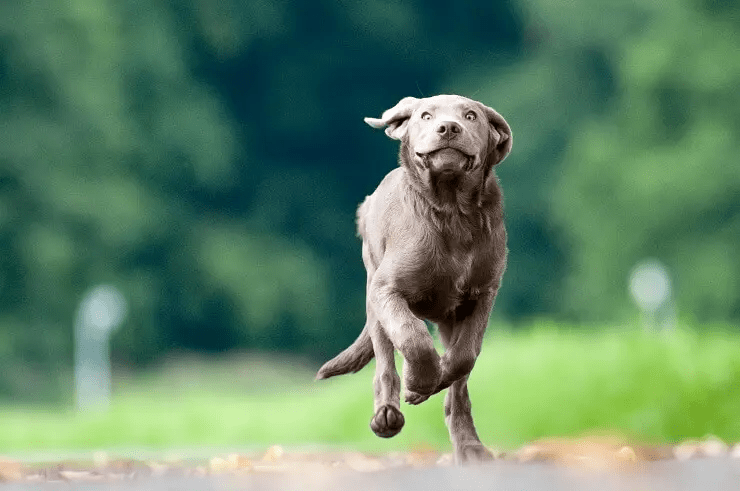
If you are a first-time handler and want to run a Silver Labrador at the AKC Hunt Tests, you must consider the following two points while adopting a Silver Labrador.
- Health Issues: Raising a Silver Labrador is no different than raising a standard colored Labrador. In fact, they can suffer from the same health concerns that are specific to the Labrador Retrievers. However, there is no denying that because of their rarity, Silver Labradors tend to cost very high and therefore are particularly in demand among the backyard breeders. Consequently, you won’t even know what diseases are inherent in your dog unless you adopt it from a reliable breeder and have your dog’s parents’ medical records.
Besides that, you must remember that your dog carries diluted genes, and you have no idea where they came from. Sadly, these diluted genes can lead your Lab to suffer from a skin problem called “Color Dilution Alopecia.” Because it is a genetic disorder, you have to be watchful of your dog’s health. - Pedigree: When we intend to run a dog in the hunt tests, we look for dogs with champion titles. It is not that dogs without the championship pedigree do not excel in hunt tests. But you don’t get a guarantee that your dog will emerge as a master retriever. Unfortunately, not many trainers run Silver Labradors in hunt tests and field trials. Consequently, you will have to go through many trouble finding a Silver Labrador with a championship title pedigree. Even if you get one, your budget will skyrocket. So take your decisions keeping in mind all these issues.
When did people saw Silver Labradors for the first time?
Silver Labradors appeared as a pleasant surprise from the Kellogg’s Kennels when they featured in a gun magazine of the 1950s for the first time. The magazine had a picture of a group of Labrador puppies with a rare silver coat color. Before that, there were no records of Silver Labradors.
Obviously, such drastic changes in a popular breed like Labrador Retriever were bound to generate controversies. Unfortunately, most of these controversies are based on fictions than facts, and there seems to be no end to it unless science makes a severe intervention.
Read ahead to get an overall idea of this controversy and make yourself mentally ready to deal with your contending handlers’ potential backlashes at the Hunt Tests.
Mixed breeds or Latecomers
The main argument of the Labrador Purists is that the diluted genes were introduced in the Labrador Retrievers by some breeder who interbred the popular breed with some other dog breed having the’d’ genes. Consequently, the diluted versions of the standard three colors came into being.
Silver Labs and other dilute colored Lab supporters argue that the diluted genes were always there in the Labrador Retrievers. However, they remained hidden for long periods. Some scientists support this argument because such cases of rare genes being hidden or dormant are not too uncommon.
Truth to be told, the arguments mentioned above are mere speculations. There is no scientific proof to uphold them. As far as the new diluted versions of Labradors are concerned, we only know about the leading cause of such dilute colors. However, till now, we haven’t been able to find the process or the medium through while the diluted genes were introduced in the Labrador Retrievers.
Genes and Colors
The matter is all about genes. To enunciate more elaborately, your Labrador’s coat color will be determined by the genes it has inherited from its parents. There is no rocket science about it. It is just biology and that too of elementary level.
Labrador Retriever’s coat color’s determinant genes are ‘B’ and ‘E.’ Each parent transfers one ‘B’ allele and one ‘E’ allele to their young ones. These alleles have their recessive counterparts as well. They are ‘b’ and ‘e’ alleles. A gene combination comprises of four alleles. Each parent transfers two alleles, one ‘B’ or ‘b’ and one ‘E’ or ‘e.’
A Labrador Retriever can have a black coat only if it receives one dominant ‘B’ and one dominant ‘E’ allele from its parents. Here are the gene combinations that will create black Labradors:
- EEBB
- EeBB
- EEBb
- EeBb
On the other hand, a Labrador will have a chocolate-colored coat if it receives one dominant ‘E’ gene and two recessive ‘b’ genes. Here are the gene combinations for Chocolate Labradors:
- Eebb
- EEbb
Finally, a Labrador can have a yellow coat if it receives two ‘e’ genes from its parents. Here are the gene combinations for Yellow Labradors:
- eeBB
- eeBb
- eeBb
| Female/Male | EB | Eb | eB | eb |
| EB | EEBB | EEBb | EeBB | EeBb |
| Eb | EEBb | EEbb | EeBb | Eebb |
| eB | EeBB | EeBb | eeBB | eeBb |
The chart given above will help you understand the role of genes in determining your Labrador’s coat color more quickly.
Role of Diluted Genes
When it comes to standard colored Labradors, ‘E’ and ‘B’ alleles are the central determinant genes. However, as far as Silver Labradors are concerned, along with the two alleles mentioned earlier, another gene plays a vital role in determining the coat color. These are called the ‘D’ genes.
But then, the matter is not that straightforward. Before jumping into any conclusion, you must know that the ‘D’ genes do not really affect a Labrador’s coat color unless it is a recessive one.
Interestingly, if a Labrador has even one dominant ‘D’ gene, it will inherit one of the three accepted coat colors. For a Labrador to have a dilute colored coat, it must have two recessive ‘d’ alleles in its gene combination. The given chart will enable you to understand how recessive ‘d’ genes affect the standard colored Labradors:
| Solid Colour | Diluted Version |
| Chocolate | Silver |
| Yellow | Champagne |
| Black | Charcoal |
It is to be noted that there is no rigid rule that Silver Labradors will produce only Silver puppies. As mentioned earlier, a Labrador requires two recessive ‘d’ genes to have a silver coat.
Therefore, if a Silver Labrador mates with a Labrador having ‘DD’ genes, it will produce standard colored Labradors as the puppies will receive at least one ‘D’ allele. However, if that Silver Lab mate with a Labrador having ‘Dd’ genes, it may give birth to both standard colored Labradors and Silver Labradors.
Alleged Relation with Weimaraner
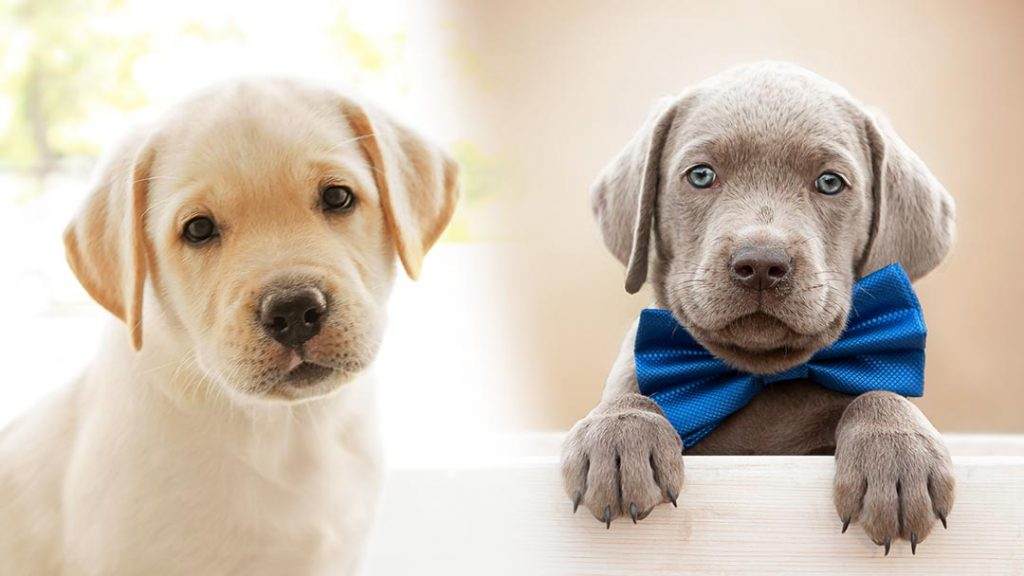
Opponents of Silver Labradors allege that the diluted genes were introduced in the Labrador Retrievers by interbreeding them with Weimaraners. To support this speculation, they give the following arguments:
- The coat color of Silver Labs is similar to that of Weimaraners.
- Like the Silver Labradors, Weimaraners have the diluted genes that give them their distinct body color.
Some of them even go to the extent of claiming that Silver Labradors have longer ears than the standard Labradors. For those who don’t get the importance of this argument, it is to be noted that long ears are one of the Weimaraners’ distinguishing features.
Even though some weightage can be given to the arguments mentioned above, none have been scientifically proven. Consequently, the debates over the source of Silver Labradors’ diluted genes goes on.
Gene Mutation
Genes are composed of DNA series. A mutation in genes occurs when the constituent DNA sequences go through permanent changes. Such phenomena are not unusual. There are several living examples of gene mutations. Therefore, some Silver Labrador supporters resort to this gene mutation argument to establish the Silver Labradors’ purebred status.
To enunciate more elaborately, Silver Lab supporters argue that there is no question of crossbreeding when it comes to Silver Labrador. They are very much purebred with all the Labrador Retrievers’ distinguishing features. As far as that unique silver coat is concerned, it is just a product of a process called evolution.
Generally, mutations tend to be of two types:
- Environment induced: Environmental agents, also called mutagens like chemicals, radiation, and infectious agents, introduce mutations in the DNA sequences of the organisms.
- Spontaneous: Spontaneous mutations refer to those mutations that occur due to some errors in the cell division process.
Whatever may be the cause of gene mutations, there is no uncertainty surrounding the fact that these mutations can be transferred to the young ones by their parents if, by any chance, they are present in the eggs or/and sperm cells.
Unfortunately, in Labrador Retrievers, it is still unclear how such alterations in their DNA structure occurred. Consequently, the debate between the designer and purist generation breeders goes on.
Hidden Genes
Besides the gene mutation argument, Silver Labrador supporters resort to another theory to defend their favorite dog. According to this argument, the diluted genes were always there within the Labrador Retrievers. However, these genes began to affect the dog’s body color only from the 1950s.
Truth be told, such changes in the breed almost one hundred and fifty years after its inception may seem odd. However, one cannot ignore that the breeding practices before the 1950s used to be really rigid. A minor change in the dog led breeders to disqualify it from further breeding.
Furthermore, once the Labrador Retrievers were recognized by the American Kennel Club as a separate dog breed, a full stop was put on its further intermixing with other dog breeds. Consequently, the gene pool started shrinking. The more the gene pool contracted, the more the inbreeding induced consequences began to show up in the breed.
One of those consequences was the alleged gene mutation. Interestingly, a gene mutation can take 30 to 40 years to show up (the first batch of Labradors were enrolled with AKC in 1917).
Moreover, one must remember that Labradors had been crossbred with various retrievers before the AKC recognized them as a separate dog breed and, after that, closed them off. One of such retrievers were the Chesapeake Bay Retrievers. Coincidentally, Chesapeake Bay Retrievers have that controversial ‘d’ gene within them.
Conclusion
Before people jump to insult and attack Silver Labradors and their handlers, they must know and understand the AKC Hunt Tests’ primary goal. The Hunt Tests are aimed to find the best retriever dog in the nation. Only those dogs can participate in these events that are enrolled with the American Kennel Club or its affiliated organizations.
Therefore, it is the AKC that allows registration of Silver Labs under the Labrador category. If you have any problem with the dog, enunciate your apprehensions before the AKC. Write letters or send emails or any other peaceful means to voice your concerns. Why heckle and harass the participants and destroy the atmosphere and sanctity of the hunt tests?
Most of the Silver Labrador owners don’t even know about the controversies related to their beloved dog. Even if they know, they are trying really hard to establish their pup’s legitimacy by running them in such hunt tests. Why demoralize them and disrespect their efforts?
If you are a Silver Labrador fan or owner and want your dog to participate in the AKC events, no need to be perturbed. If your dog is enrolled with the AKC, you can easily register it for the hunt tests. However, be mentally prepared to fight the prejudices that people may have regarding your dog.
For the Silver Labrador haters, we would like to say that the AKC events are meant for celebrating the extraordinary relationship between man and dog. Because it is a celebration, there is no place for spite and malice. So, please do not harass the Silver Labradors and maintain the sanctity of the AKC events.
Table of Contents


